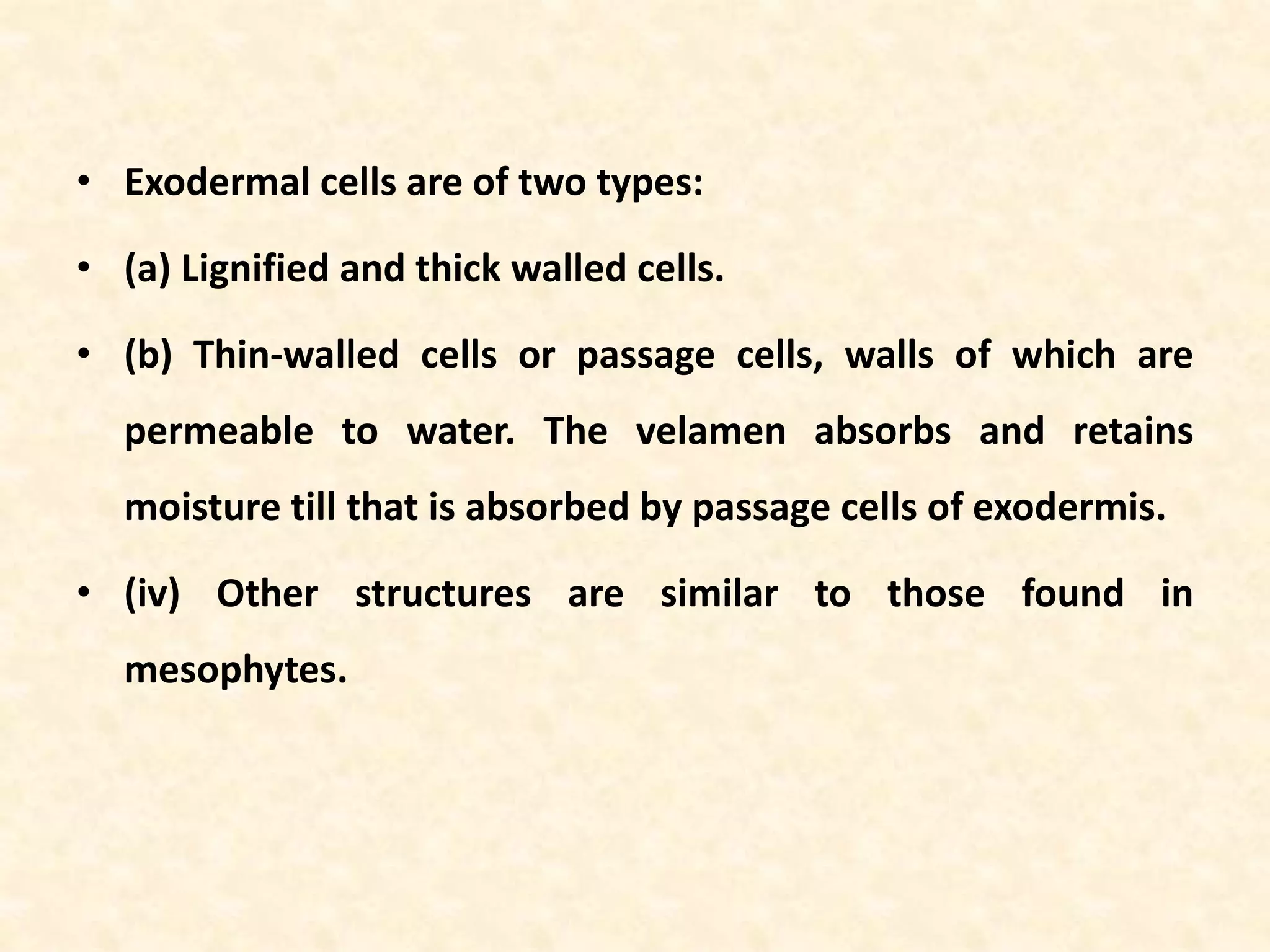Epiphytes are autotrophic plants that grow on the surfaces of other plants, absorbing moisture and nutrients from the atmosphere and decaying supporting plant material. They exhibit various morphological and anatomical adaptations, such as specialized root systems and modified leaves, to thrive in diverse environments, particularly rich in moist, warm regions. Types of epiphytes include protoepiphytes, hemiepiphytes, nest epiphytes, and tank epiphytes, each with unique characteristics in water and nutrient acquisition.










